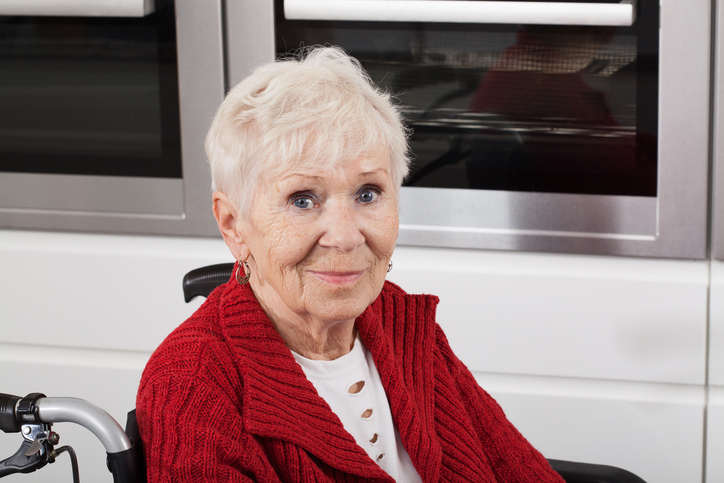
•Your mother won’t need to move anywhere, and she can enjoy the comfort of her own home;
•She will likely have more living space as compared to an assisted living community;
•She can more easily maintain her current friends, and enjoy her familiar neighborhood and surroundings;
•It will perhaps be less disruptive to her life, because it won’t require moving (but the renovations might be disruptive temporarily).
•There are limitations on the amount of medical care that can be provided;
•She may require an in-home care provider;
•There may be more burden placed on family and friends;
•She may experience isolation and loneliness;
•Home improvement to make the house livable may be difficult or expensive.
•Lack of emergency response;
•Limited access to services;
•Vulnerable to abuse and thievery;
•Can become unaffordable (paying for home repairs and for in-home care, if necessary);
•Home ‘resaleability’ may be affected after renovations (Note: if done right, modifications can be made to blend seamlessly with the existing home and may actually add to the home’s retail value. According to the National Home Builder Association, homes that are suitable for multigenerational living are currently one of the top trends for people seeking housing.)
The information presented below is based on “The MetLife Report on Aging in Place 2.0: Rethinking Solutions to the Home Care Challenge.” It will give you a reference point for what you can expect in terms of cost if your mother opts to stay in her own home. It begins with data on national averages for an individual’s monthly expenditures when living at home, followed by a section on average costs for typical home modifications.
The average cost for an individual’s bills at home are as follows:
◾$850/month for utilities, taxes, maintenance, etc.
◾$250/month for food
◾$456/month for three hours of daily assistance twice weekly at $19/hour
◾$804/month for three days per week in adult day services
According to an AARP study, only 13% of homes are ready to meet aging needs without modification (e.g. homes that have no stairs, wide doorways, and accessible bathrooms), which means that most people will need to make some structural changes to the home in order to successfully age-in-place. According to the MetLife Report on Aging in Place, the national average cost for basic design and structural modifications, commonly required to make a home suitable for aging needs, is $9,000–$12,000 for a one-story residence.
• Assisted living communities provide constant care, if needed;
• Assisted living offers a community of its own for residents to become a part of so your mom can make new connections;
• Scheduled activities and events;
• Specialty assisted living options are growing — you can find pet-friendly assisted living, eco-friendly assisted living, and assisted living on a college campus, just to name a few options;
• No need to maintain a home;
• Greater privacy and a home-like setting.
• A lot of seniors may be resistant to assisted living. However, many seniors find they like it more once they move in than they ever expected to;
• Can be cost-prohibitive;
• Some seniors have trouble adjusting to a group setting with rules and policies;
• Does not offer the level of care needed for many medical conditions.
•Consider the resources your mom has at home now. Are there family members or close friends in the neighborhood? Is there good public transportation in the area for when she can no longer drive? Surveying what’s available to your mom now can help you figure out how well it might match her level of need in the future.
• Research your local options. In addition to considering the resources your mom has at home, also look into what her assisted living options in the area are. You can find details and reviews for both assisted living and in-home care agencies that can give you a good idea of what your options are.
• Figure out what your mother can afford. Assisted living is expensive enough that money’s got to be a consideration. In many cases, specialized insurance products designed to pay for long-term care can help (see this earlier blog post for information on these types of financial products) and many people are able to leverage their home by using a reverse mortgage to pay for assisted living. Compare the costs of your different options and determine which one makes the most financial sense for you. Be sure to talk to an experienced Elder Law Attorney, such as myself, about Medicaid implications when it comes to selling the house etc.
• Have a family meeting. In most cases, this shouldn’t be a decision made entirely by one person. Talk it over with your mom and the rest of the family and weigh your options together.
Fredericksburg Medicaid Asset Protection Attorney: 540-479-143
Rockville Medicaid Asset Protection Attorney: 301-519-8041
DC Medicaid Asset Protection Attorney: 202-587-2797














Leave a comment
You must be logged in to post a comment.